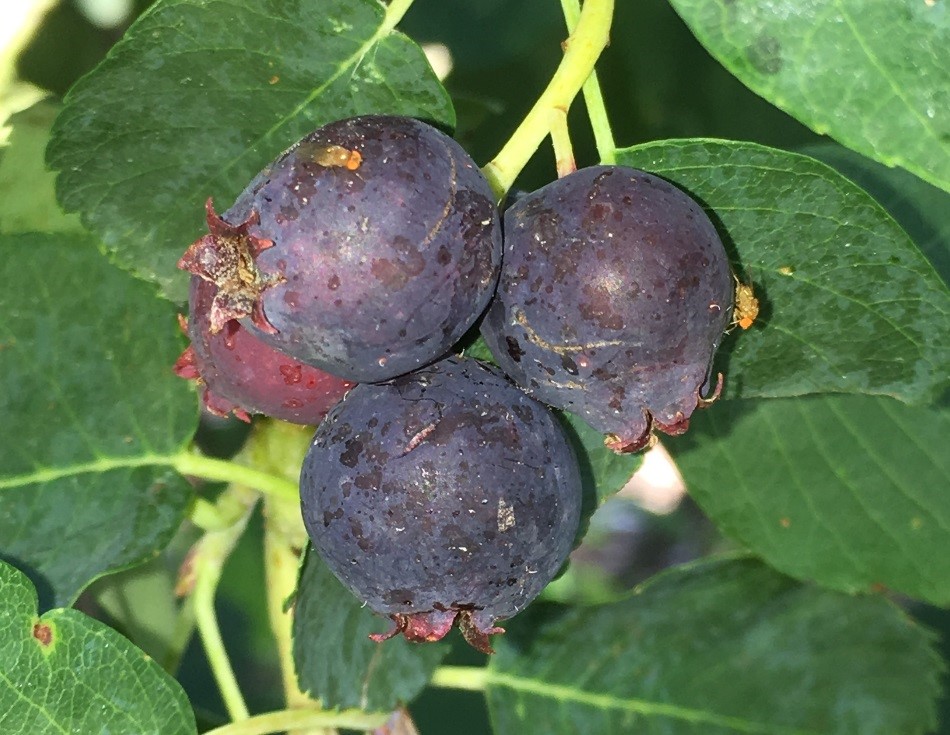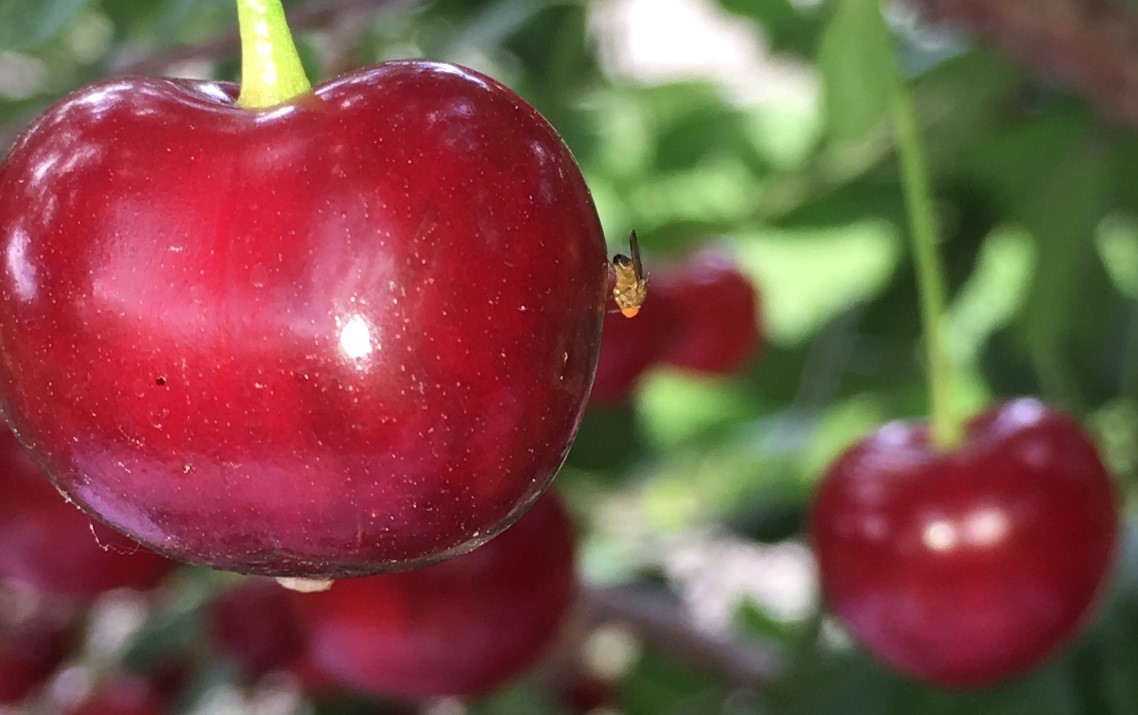The Fruit Fly Fight Continues
It’s been a busy and taxing summer in the fruit orchard. Busy is good: after a later spring, we had good berry crops and there are more apples, aronia, plums and grapes to come. Taxing was bad: a major number of spotted wing drosophila (SWD) fruit flies appeared and did their best to ruin the early fruit. The juneberries, cherries and late haskaps were all affected; currants to a much lesser degree.
 SWD fruit flies on Juneberry.
SWD fruit flies on Juneberry.
On July 7th, most of the juneberries were still red and I started spraying on the 9th and 10th, after it rained. It was moist and warm and the conditions were perfect for SWD. By Sunday, the 14th, the juneberries were swarmed with SWD. I called in emergency pickers plus our own crew and we did our best on Monday. The next day was Field Day and afterwards I allowed visitors to pick juneberries. We removed fruit the next 3 days and I sprayed the plants down again.
The cherry crop was a loss for about the seventh year. I held out hope for some trees and shrubs that I started spraying while the fruit was green but, alas, that fruit also succumbed.
 SWD fruit flies on sour cherry with a larva at the bottom of the fruit.
SWD fruit flies on sour cherry with a larva at the bottom of the fruit.
Early red and black currants were ruined though we don’t really find larvae in the fruit. I think they puncture the fruit and lay their eggs, but the egg rarely develops. The holes let in spoilage organisms and then the berry starts to dehydrate. We get a lot of dried/fermenting berries but don’t see any maggots. Later-ripening currants are generally less affected as SWD numbers go down with (normally) drier weather. And so far, I have never seen SWD in aronia berries.
So what can we do better? What can an average homeowner do? I have to say, spray-wise, I don’t know. Certainly CREC could get an air-blast sprayer that would get very fine droplets throughout the orchard (part of the problem is that I cannot spray the whole orchard in one evening with my handheld sprayer). SWD are known to hang out in woody edges and we have lots of those, too. So we could spray those areas or cut them down. But to what end? We need the wind protection and spraying only the plants has already eliminated the spiders and caterpillars I used to see during harvest. Too much insecticide will eventually bring on spider mites.
Netting? This is the only real solution to getting a crop with minimal insecticide use. Producers that are able to sell their crops to high-value markets, like restaurants, are doing this. I think this works for homeowners that have a small crop area to protect. The netting needs a structure and you will still have to scout for insects – just a couple getting inside will turn into thousands in no time. Because of the number of other projects at the CREC, I would not have the help needed to construct and maintain the structures, let alone deploy the netting. But a dedicated homeowner just might!
Possible netting source: https://www.berryprotectionsolutions.com/netting
Structure video: https://www.youtube.com/watch?v=_eAODdcYnXk
Kathy Wiederholt
Kathy.wiederholt@ndsu.edu
Fruit Project Manager


